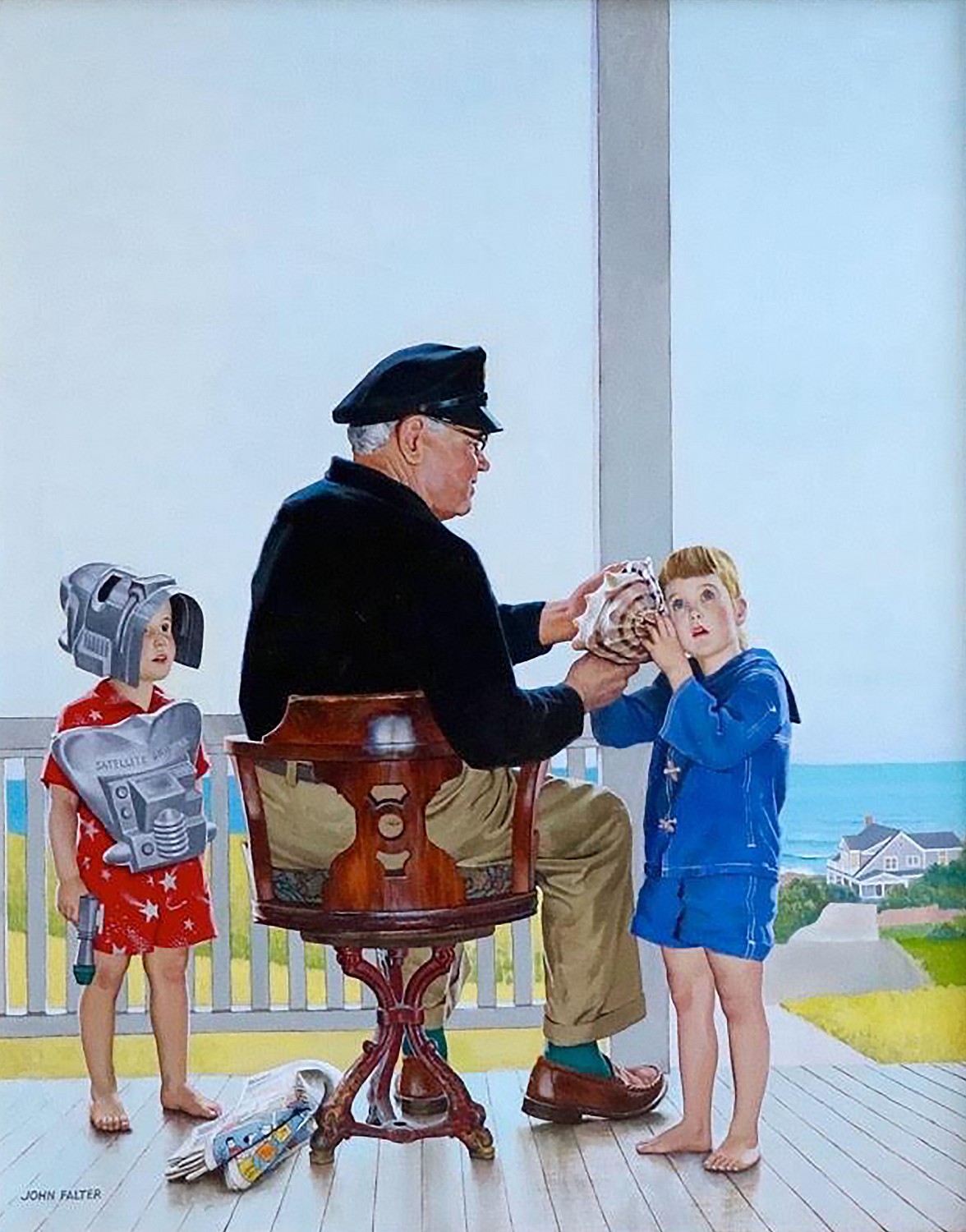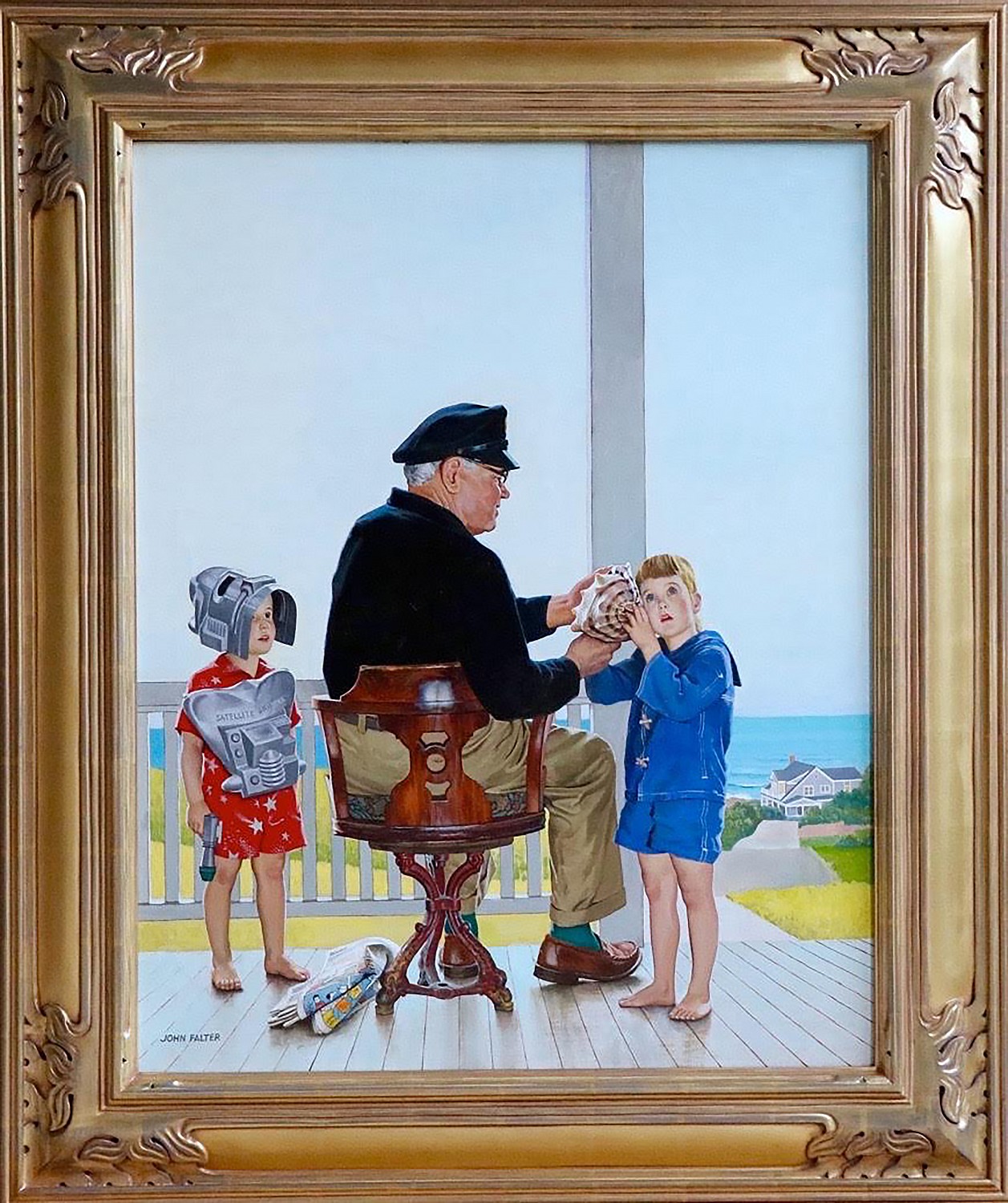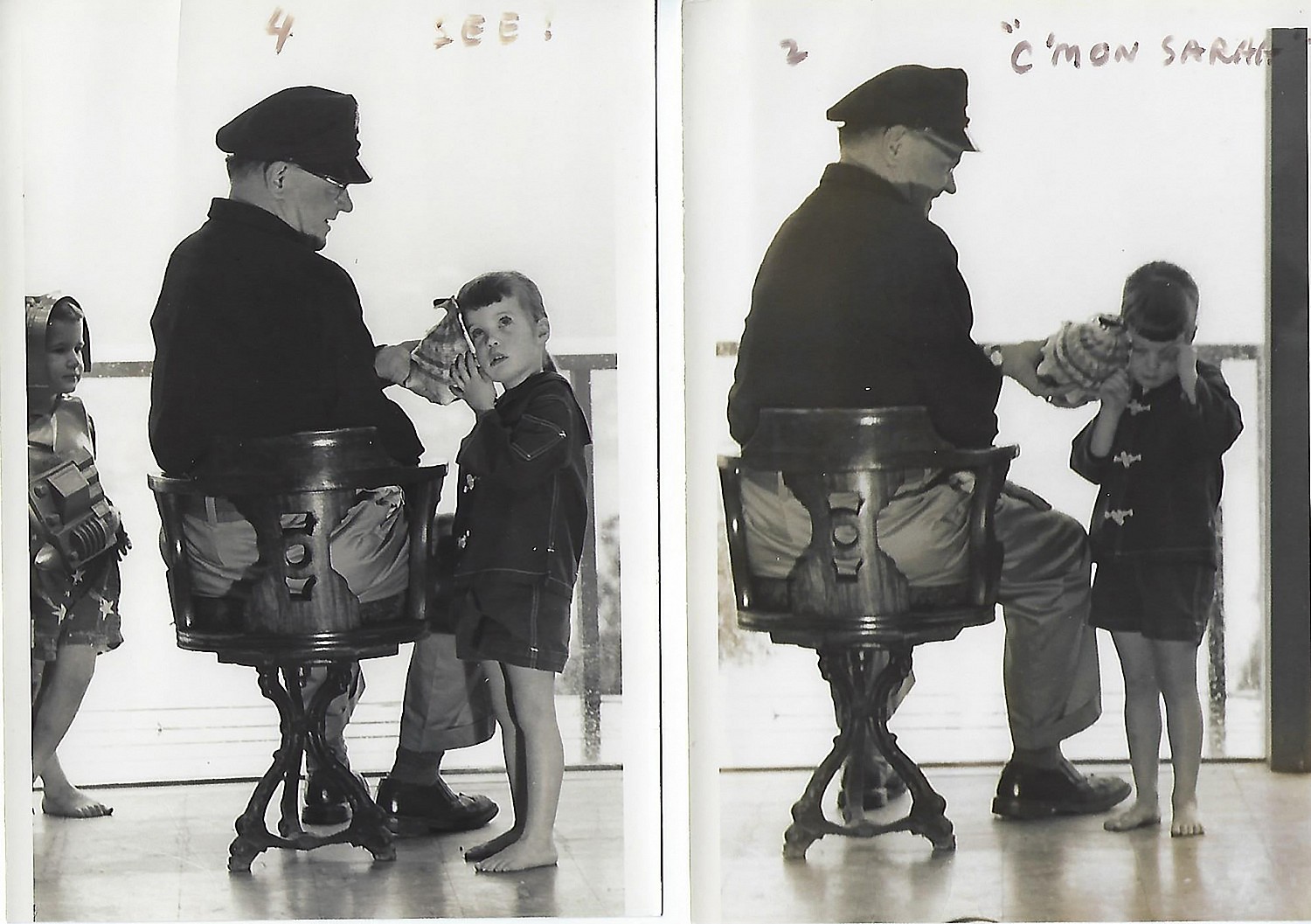"Summer by the Sea, Saturday Evening Post Cover, 1956" Lot no. 3635
By John Philip Falter (1910-1982)
1956 (Estimated)
30.00" x 24.00"
Oil on Canvas
Signed Lower Left
REQUEST PRICE
PURCHASE REQUEST
Saturday Evening Post Cover, July 21, 1956
This Falter cover was owned by Sarah Johansen, daughter of John Falter. She is the young girl to the right with the conch shell to her ear. On the left, is a little boy who was a neighbor friend of hers growing up in Bucks County. They used to ride tricycles together. He's wearing a spacecraft shield and laser; the shield reads "Satellite Skiff". In addition, she has 4 photographs that Falter took of Sarah posing for the painting; he's written on the photos: "C'mon Sarah"
and "See".
Sarah indicated this was done in the height of his career, July 21, 1956, and is an excellent example of his work. On the floor by the chair, is a newspaper with the peanuts comic strip by Charles Schulz. According to Sarah, John Falter said he got a fan letter from Charlie Schulz thanking him for putting his peanuts comic strip in the painting. Unfortunately, the whereabouts of this letter is unknown.
The Post described, “Space-flight gear, a conch shell; in new and old ways youngsters savor the glamour of imaginative play. That lad is not long for this world; soon he’ll dream himself away on a junket to the moon. Behind him on earth the lass will listen to seashore breakers that always roar inside conch shells, thanks to whoever put them in there. Doubtless she is hearing the coast of China, for she can tune in the local ocean with her unshelled ear. Conchs excel at bringing in the distance; John Falter heard the Pacific that way when a boy in Kansas. But he’s wrong in saying conchs also make good doorstops; they creep, and the door goes wham! A brick is better. That ccast-side porch is near Falter’s California home, but the water is the Atlantic, off Maine. No use trying to understand the painters.” (The Saturday Evening Post, July 21, 1956, p. 3)
Explore related art collections: Saturday Evening Post Covers / $100,000 & Above / Beach/Summer / Children / Boating/Nautical / 1950s / Hunting/Fishing
See all original artwork by John Philip Falter
ABOUT THE ARTIST
John Philip Falter was born in Plattsmouth and reared in Falls City, Nebraska. He studied at the Kansas City Art Institute, the Art Students League in New York on a scholarship, and the Grand Central School of Art in New York. Among his teachers were Mahonri Young, George Wright and Monte Crews.
Falter began his career in illustration early, starting with the Pulps, and at 20, sold his first picture to Liberty, a “slick” paper magazine. Talented and prolific, he soon added most of the other major magazines, and many advertising agencies, to his roster of clients.
His most important pictures were painted for the covers of The Saturday Evening Post, and he produced more than 200 of them. Many were based on the experiences of his Nebraska boyhood, in small town and country settings. He also painted a notable series of detailed street scenes in cities across the United States. These grew out of a chance visit of a Post art editor to Falter’s studio; there a picture of Gramercy Park caught his eye, which Falter had painted for pleasure.
John served in the Navy as a Chief Boatswain’s Mate during World War II; later, he was commissioned a Lieutenant on special art assignments. Among other projects after the war, he illustrated over 40 books for Reader’s Digest and completed many portrait commissions, including those of Admiral Halsey, Louis Armstrong, Olivia de Havilland, James Cagney, Mrs. Clark Clifford, and tenor John Charles Thomas. He later painted an outstanding series of historical subjects for the Bicentennial, commissioned by the 3M Company in 1976.
Falter was a member of the Society of Illustrators, the Players, and the Philadelphia Sketch Club. In 1976, he was elected to the Society of Illustrators’ Hall of Fame. Although he did not often exhibit, his paintings are in several museums.







